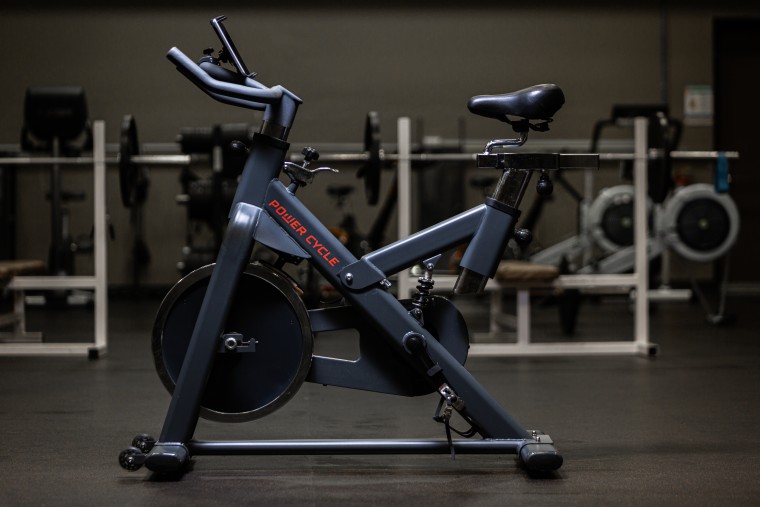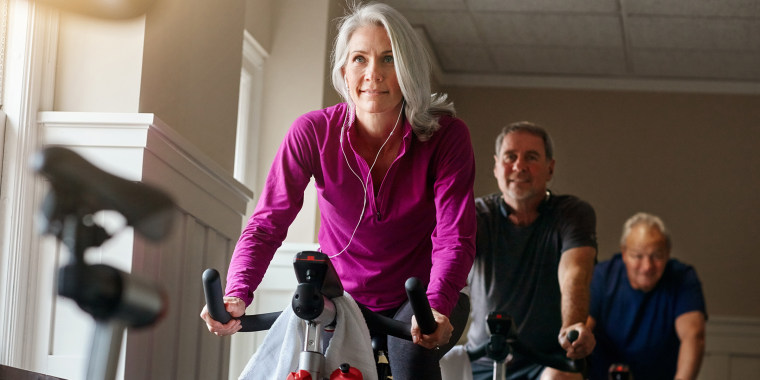One of the main complaints about exercise is that it requires a big time investment — with hours of toil and sweat necessary to see a health payoff.
But what if just a few seconds of movement repeated a few times in a row could get you there?
People who sat for eight hours but interrupted their inactivity with four seconds of “all-out” sprints on a special stationary bike every hour — 160 seconds of total exercise per day — burned more fat and had lower levels of triglycerides the next day compared to people who kept sitting.
The results of the small study were published in Medicine & Science in Sports & Exercise in 2020. Now, a newer study, published in the same journal in July, has found more benefits of this style of training, with participants improving a measure of aerobic fitness. The program is "especially suited for people with limited time to exercise," the authors wrote.
Triglycerides are a type of fat in the blood. Eating a lot of greasy foods or consuming more calories than the body needs may lead to high triglyceride levels, which can raise the risk of heart disease.
Previous studies showed just one bout of exercise, like running for an hour, could improve triglyceride levels the next day, but this experiment showed the same benefit happened with just 160 seconds of exercise, said Edward Coyle, professor of kinesiology and health education at the University of Texas at Austin.
“Exercise improves health. Usually, what you do today improves your health tomorrow,” Coyle, who is also the director of the school’s Human Performance Laboratory, told TODAY.
“So when you do very intense exercise like this, even though it’s not much exercise at all, it still is a stimulus to the muscle… it improves the muscles’ ability to take triglycerides out of the bloodstream — burning them directly, increasing the fat oxidation.”
For the 2020 study, researchers asked four men and four women — all healthy and in their 20s — to sit for eight hours, getting up only to get food or use the bathroom. To check how their bodies responded to a high-fat meal the following day, the volunteers’ blood was drawn after they drank a milkshake of melted ice cream and heavy whipping cream the next morning.
They then sat for eight hours on a separate day, but did brief bouts of intense exercise — a four-second sprint, followed by 45 seconds of rest, repeated five times — every hour. It amounted to 160 seconds of exercise for the whole day.
Once again, the participants returned the next morning to drink the decadent milkshake and get their blood drawn. This time, they had a much better metabolic response. Their triglycerides were 31% lower after the high-fat meal, compared to the morning after the sedentary day. They also burned more fat over the next six hours.
The new study involved 11 young, healthy people who did the four-second sprints repeated 30 times. They started with half a minute of rest between the sprints, which was gradually reduced to 15 seconds. Thus, each session eventually took less than 10 minutes to complete. After training this way three times a week for eight weeks, their peak oxygen uptake — a measure of aerobic fitness — increased by more than 13%.
Taking short activity breaks from sitting, even if it’s just for one minute, can provide health benefits if done regularly, said Keith Diaz, an assistant professor of behavioral medicine at the Columbia University Medical Center in New York, who studies the health dangers of too much sitting.
Diaz, who was not involved in these studies, called such brief breaks "exercise snacks." Muscles are important for controlling blood sugar and triglyceride levels, so when people don't move, this process doesn’t work as effectively. Really intense, all-out exercise that uses almost all of your muscle fibers will counteract this, he said, noting it was particularly striking how brief the workout was in this experiment.
“This could be good news for the many sedentary adults who have limited time in their day and may not be able to get to a gym. Of course, the caveat is that the exercise was an all-out effort,” Diaz said.
The sprints were done on a special type of stationary bike called an inertial load ergometer.

The bike, with its big and heavy flywheel, allows riders to go from zero revolutions per minute to about 160 RPMs in four seconds, requiring them to go slow and hard at first, then fast with less resistance, Coyle said. This engages fast-twitch muscle fibers, which spring into action when people move very vigorously.
The ergometer is different from a standard stationary bike since the typical home equipment lets riders accelerate too quickly and recruits fewer muscle fibers, he noted. Coyle owns equity in a company that sells the inertial load ergometer used in this study, but said it didn’t influence the results.
How to do the 4-second workout in real life:
In other studies, people who did the very brief workout three times a week not only had a better metabolic response, but improved their cardiovascular system and became stronger, Coyle said.
But it’s difficult to replicate the intensity of the special bike at home, he noted. The closest thing would be doing 40-yard sprints on a track or up a hill, but it’s easy to pull a muscle that way, he noted.
Climbing a flight of stairs as quickly as possible would be another option, but there’s a chance a person may miss a stair or slip and get hurt. Jumping jacks wouldn’t involve enough muscles, but anything is better than nothing, Coyle said.
“The challenge for those with sedentary jobs will be to figure out how and where they might be able incorporate all-out sprints,” Diaz said. “I'm certain many workers might find it socially unacceptable to sprint the office hallways.”
The next steps may be to figure out more practical means to offset the harms of sitting in the workplace, he noted.





